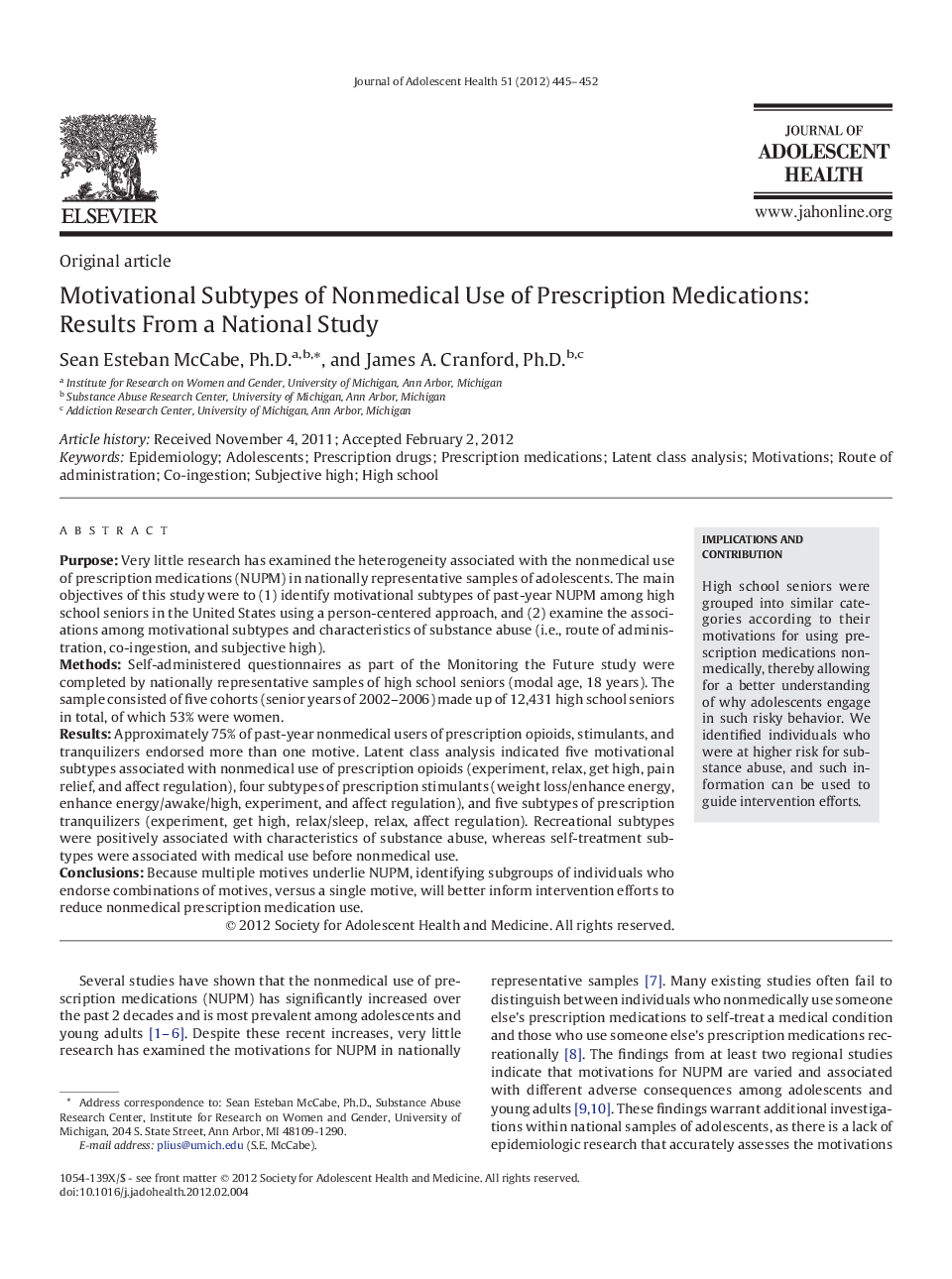| Article ID | Journal | Published Year | Pages | File Type |
|---|---|---|---|---|
| 1078663 | Journal of Adolescent Health | 2012 | 8 Pages |
PurposeVery little research has examined the heterogeneity associated with the nonmedical use of prescription medications (NUPM) in nationally representative samples of adolescents. The main objectives of this study were to (1) identify motivational subtypes of past-year NUPM among high school seniors in the United States using a person-centered approach, and (2) examine the associations among motivational subtypes and characteristics of substance abuse (i.e., route of administration, co-ingestion, and subjective high).MethodsSelf-administered questionnaires as part of the Monitoring the Future study were completed by nationally representative samples of high school seniors (modal age, 18 years). The sample consisted of five cohorts (senior years of 2002–2006) made up of 12,431 high school seniors in total, of which 53% were women.ResultsApproximately 75% of past-year nonmedical users of prescription opioids, stimulants, and tranquilizers endorsed more than one motive. Latent class analysis indicated five motivational subtypes associated with nonmedical use of prescription opioids (experiment, relax, get high, pain relief, and affect regulation), four subtypes of prescription stimulants (weight loss/enhance energy, enhance energy/awake/high, experiment, and affect regulation), and five subtypes of prescription tranquilizers (experiment, get high, relax/sleep, relax, affect regulation). Recreational subtypes were positively associated with characteristics of substance abuse, whereas self-treatment subtypes were associated with medical use before nonmedical use.ConclusionsBecause multiple motives underlie NUPM, identifying subgroups of individuals who endorse combinations of motives, versus a single motive, will better inform intervention efforts to reduce nonmedical prescription medication use.
